Have you ever wondered why some websites effortlessly convert visitors into paying customers, while others struggle to get even a few clicks? The secret lies in Conversion Rate Optimization (CRO) – a strategic process that maximizes the percentage of website visitors who take a desired action, whether it’s making a purchase, filling out a form, or subscribing to a newsletter.
Think of your website as a well-oiled machine. CRO is about fine-tuning that machine, ensuring it runs at peak efficiency. By optimizing your website’s design, content, and user experience, you can significantly increase the number of visitors who convert into valuable leads or customers.
What is Conversion Rate Optimization (CRO)?

In simple terms, CRO is the art and science of persuading your website visitors to take a specific action. It involves analyzing user behaviour, identifying areas for improvement, and implementing data-driven strategies to boost conversions.
To calculate your conversion rate, simply divide the number of conversions by the total number of visitors and multiply by 100. For example, if your website had 1000 visitors and 50 of them made a purchase, your conversion rate would be 5%.
Why CRO Matters?
CRO isn’t just a buzzword; it’s a critical strategy for maximizing your online success. Not every idea you have will improve your website’s conversion rate. In fact, research has shown that only a small percentage of experiments lead to significant improvements. That’s why a strategic, data-driven approach to CRO is crucial for avoiding wasted time and resources.
Let’s explore why CRO is essential for your business;
- Boost Your Revenue, Not Just Your Traffic: CRO focuses on getting the most out of your existing traffic, generating more sales and revenue without increasing your advertising budget.
- Increased ROI from Marketing: A website optimized for conversions makes your marketing efforts more efficient, turning clicks into customers.
- Create a Delightful User Experience: CRO involves understanding your audience’s needs and creating an intuitive, engaging website that caters to them. Happy visitors are more likely to convert.
- Outsmart Your Competition: Even small improvements in conversion rates can give you a significant advantage in the market.
- Make Decisions Based on Data, Not Guesswork: CRO relies on data and analytics, allowing for informed decisions that drive results.
In a nutshell, CRO helps you work smarter, not harder. It’s about maximizing your website’s potential and transforming it into a lead generation and sales powerhouse.
How to Conduct CRO Analysis and Discover Hidden Opportunities

Analyzing your website’s data is the foundation of any successful CRO strategy. By understanding how visitors interact with your website, you can identify areas for improvement and make data-driven decisions that lead to increased conversions. So how do you do that?
- Define Your Conversion Goals: Determine the actions you want visitors to take (purchases, sign-ups, etc.).
- Collect Data: Use tools like Google Analytics and heatmaps to track user behaviour (bounce rate, time on page, clicks).
- Identify Pain Points: Pinpoint where visitors drop off or hesitate. Are they abandoning carts or leaving after viewing certain pages?
- Formulate Hypotheses: Develop theories about why visitors aren’t converting and brainstorm solutions (e.g., redesign a page, change a call to action).
- Test and Iterate: Use A/B testing tools like Google Optimize to compare different versions of web pages or elements and see which performs better.
By following this structured approach, you can continuously analyze your website, identify areas for improvement, and implement data-backed strategies to optimize your conversion rates and achieve your business goals.
CRO Best Practices: Tried and Tested Strategies to Boost Conversions
While every website is unique, certain CRO tactics have proven to be effective across the board. Here are some best practices to get you started:
- Know Your Audience: Conduct thorough research to understand your target audience’s demographics, interests, pain points, and motivations. This will help you tailor your website’s messaging and design to resonate with them.
- Craft Clear and Compelling Calls to Action (CTAs): Your CTAs should be prominent, easy to understand, and persuasive. Use action-oriented language and create a sense of urgency to encourage clicks. Don’t rush your visitors – anticipate their readiness to buy and guide them accordingly.
- Optimize for Mobile: With most internet users browsing on their smartphones, your website must be mobile-friendly. This means having a responsive design, fast loading times, and easy-to-use navigation on mobile devices.
- Leverage Social Proof: People trust brands that others have had positive experiences with. Incorporate customer testimonials, case studies, and reviews into your website to build trust and credibility. Consider using trust signals like industry badges and security seals.
- Streamline Your Forms: Long, complicated forms deter potential customers. Keep your forms short, asking only for essential information. Use multi-step forms to break down the process.
- Optimize Page Speed: Slow-loading pages increase bounce rates. Compress images, leverage browser caching, and minify code to speed up your site.
- Personalize the Experience: Tailor your website content and offers to different audience segments. Use data to deliver personalized experiences that resonate with each visitor, including product recommendations.
- Use Heatmaps and Session Recordings: These tools provide valuable insights into how visitors interact with your website. Identify where they click, scroll, and hesitate, and use this information to make data-driven improvements. Also, heatmaps should be used to identify the most (and least) engaging areas of a page.
Real-World Examples of Conversion Optimization

CRO is not entirely new. Different businesses have used it with various degrees of success. Let’s see some of them
- Netflix: Netflix streamlined its sign-up process, reducing form fields and simplifying design, significantly increasing sign-up rates.
- Booking.com: By prominently displaying customer reviews, ratings, and social proof, Booking.com created a sense of urgency and reassurance, leading to increased bookings.
- Amazon: Amazon constantly experiments with different layouts, product descriptions, images, and CTAs on their product pages, using A/B testing and data analysis to maximize conversions
These examples showcase that CRO is an ongoing experimentation, analysis, and improvement process, not a one-time fix.
SEO and CRO: A Powerful Partnership for Success
While CRO and SEO might seem like separate disciplines, they are actually deeply intertwined. Think of them as two sides of the same coin:
- SEO (Search Engine Optimization) is your website’s invitation to the party. It ensures you get noticed by search engines like Google, attracting the right guests (potential customers) to your site.
- CRO (Conversion Rate Optimization) is your website’s impeccable hosting skills. It ensures those guests have a great time, find what they’re looking for, and ultimately decide to stay (and ideally, make a purchase).
When SEO and CRO work together, they create a powerful synergy. SEO brings in relevant traffic, while CRO ensures that traffic converts into leads or sales. Think of it this way: SEO fills your store with potential customers, while CRO ensures those customers find what they’re looking for, have a pleasant shopping experience, and ultimately make a purchase.
Common CRO Mistakes to Avoid

Even with the best intentions, it’s easy to fall into common CRO traps that can hinder your progress. Here are a few missteps to watch out for:
- Ignoring Mobile Optimization: With the majority of internet traffic now coming from mobile devices, neglecting mobile optimization is a recipe for disaster. Ensure your website is responsive, loads quickly, and is easy to navigate on smaller screens.
- Neglecting A/B Testing: Don’t rely on gut feelings or assumptions when making changes to your website. A/B testing allows you to compare different versions of a page or element and see which one performs better, eliminating guesswork and ensuring your decisions are data-driven.
- Focusing on Vanity Metrics: Metrics like page views and bounce rate can be misleading. While they offer some insights, focus on metrics that directly impact your bottom line, such as conversion rates, revenue per visitor, and customer lifetime value.
- Implementing Too Many Changes at Once: It’s tempting to try everything at once, but this can make it difficult to pinpoint what’s working and what’s not. Make incremental changes and test them one at a time to isolate the impact of each change.
- Giving Up Too Soon: CRO is an ongoing process. Don’t get discouraged if you don’t see immediate results. Keep testing, learning, and refining your strategies.
Tools for CRO: Your Arsenal for Optimization
Several tools can empower you to make data-driven decisions and optimize your conversion rates effectively. These tools provide valuable insights into user behaviour, help you track your progress, and enable you to experiment with different strategies. Here are five essential tools to consider for CRO.
- Google Analytics: A free web analytics platform that tracks website traffic and user behaviour. It provides essential data on your conversion rates, traffic sources, audience demographics, and more. Use Google Analytics to identify areas for improvement and measure the impact of your CRO efforts.
- Hotjar: Hotjar is a powerful tool that combines heatmaps, session recordings, and user feedback to give you a deep understanding of how visitors interact with your website. Identify pain points, visualize user journeys, and uncover opportunities for optimization.
- Optimizely: A leading A/B testing and experimentation platform. Optimizely allows you to create different variations of your web pages and test them against each other to determine which version performs better.
- VWO (Visual Website Optimizer): Another popular A/B testing platform with features like heatmaps, session recordings, and form analytics. VWO offers a user-friendly interface and integrates with various marketing platforms.
- ConvertBox: A versatile tool that allows you to create targeted pop-ups, slide-ins, and sticky bars to capture leads, promote offers, and drive conversions. ConvertBox integrates with various email marketing platforms and CRM systems.
The Future of CRO: What to Expect

The world of CRO is constantly evolving, with new technologies and trends emerging all the time. Here’s a glimpse into what the future of CRO might hold:
- Personalization at Scale: As technology advances, websites will become increasingly personalized, tailoring content and offers to individual users based on their preferences and behaviour.
- AI-Powered Optimization: Artificial intelligence (AI) will play a bigger role in CRO, analyzing vast amounts of data to identify patterns, predict user behaviour, and automate optimization processes.
- Voice Search Optimization: With the rise of voice assistants like Siri and Alexa, optimizing your website for voice search will become increasingly important for capturing a growing segment of users.
- Focus on User Privacy: As consumers become more aware of their data privacy, businesses will need to prioritize transparent data collection practices and ensure their CRO strategies comply with privacy regulations.
Your Journey to Higher Conversions Starts Now
CRO is not a one-time fix; it’s an ongoing process that requires continuous learning, experimentation, and improvement. But the rewards are undeniable. By investing in CRO, you can unlock your website’s full potential, increase conversions, boost revenue, and ultimately, grow your business.
If you’re ready to take your website to the next level, contact our team of CRO experts at Edens Digital. We’ll help you develop a customized CRO strategy that aligns with your business goals and delivers measurable results.
Don’t let potential customers slip through the cracks. Start optimizing your website today!




